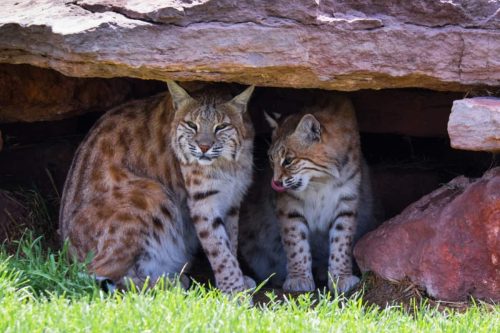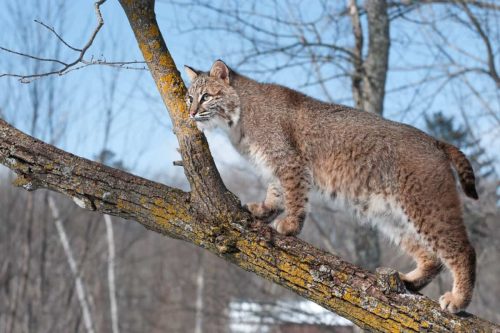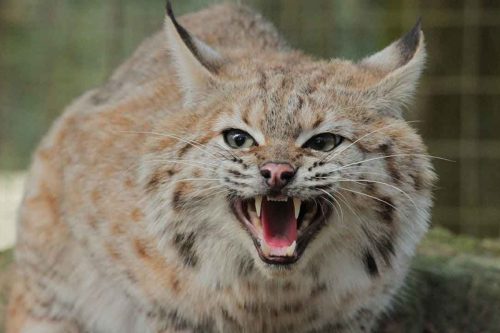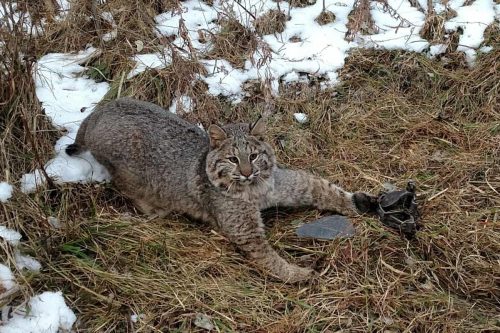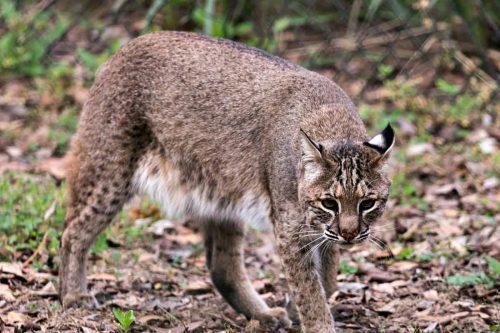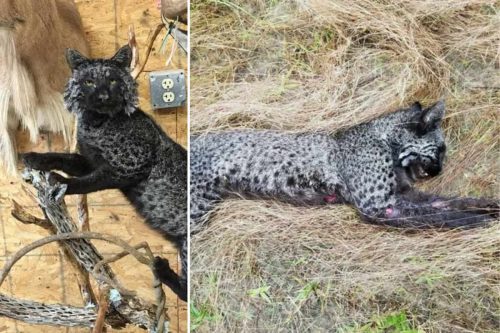Bobcat vs lynx: Two Wild Cats, Two Different Lifestyles
Bobcats or lynx Rufus or red lynx are very well-known North American wild cats. These cats belong to the lynx genus. There are three other lynx species like Canadian lynx, the Eurasian lynx, and the Iberian lynx who also belong to the lynx genus. In this article on Bobcat vs lynx, we are going to compare bobcats with these other lynx species. These cats might look as same as bobcats but many differences exist between these cats and bobcats.
At first glance, bobcats show a lot of resemblance to Canadian lynx. However, there are some unique features that we could only associate with bobcats and other lynx genus members are devoid of these features. In this article, we are going to highlight these key behavioral and physical differences between bobcats and other lynx species.
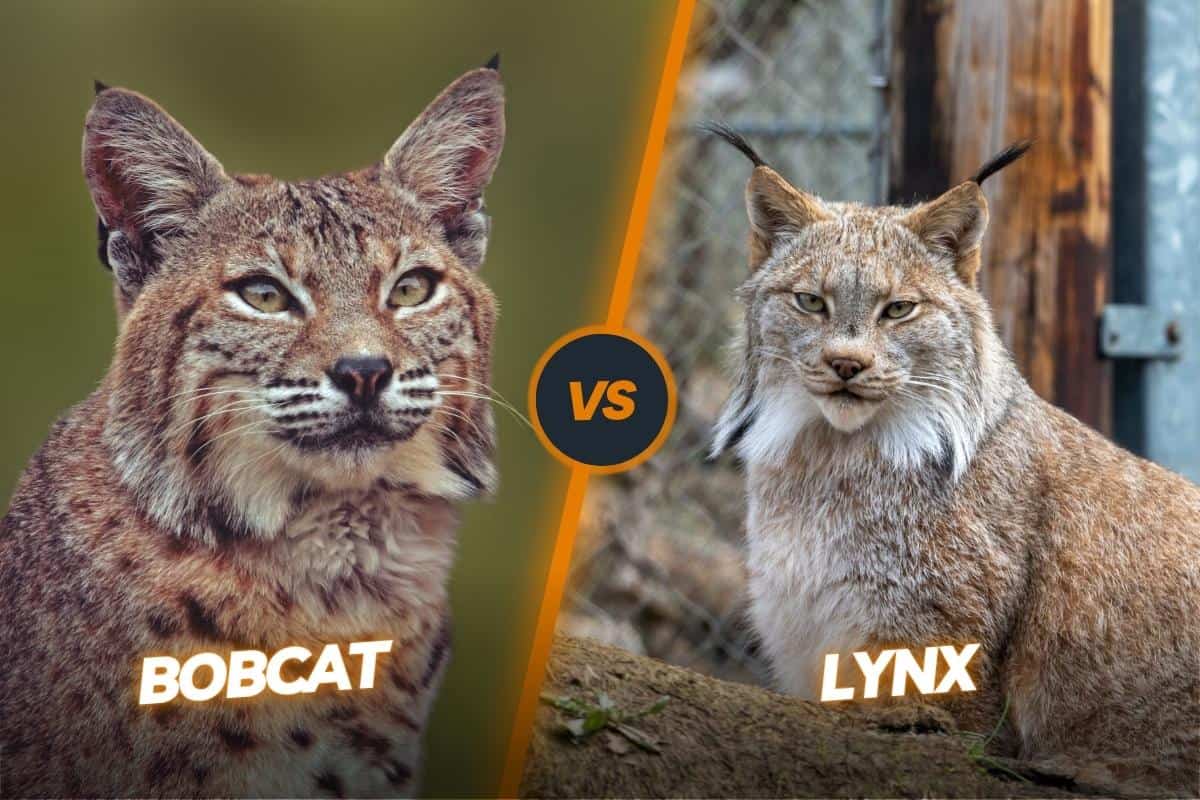
Contents
Key differences between bobcats and lynxes
If we compare bobcats and other lynx species based on some key noticeable differences, then we can say at the first glance that lynxes are slightly taller than bobcats. Lynxes also come with larger ears having long black tufts. Facial ruffs are also quite long in lynx species.
Bobcats have compact body sizes as well as short hind legs while lynxes come with quite long hind legs. These cats usually don’t make claw prints as these cats have retractable claws. When it comes to tracks, then we can say bobcats leave round-type tracks while lynxes leave oval-type tracks.
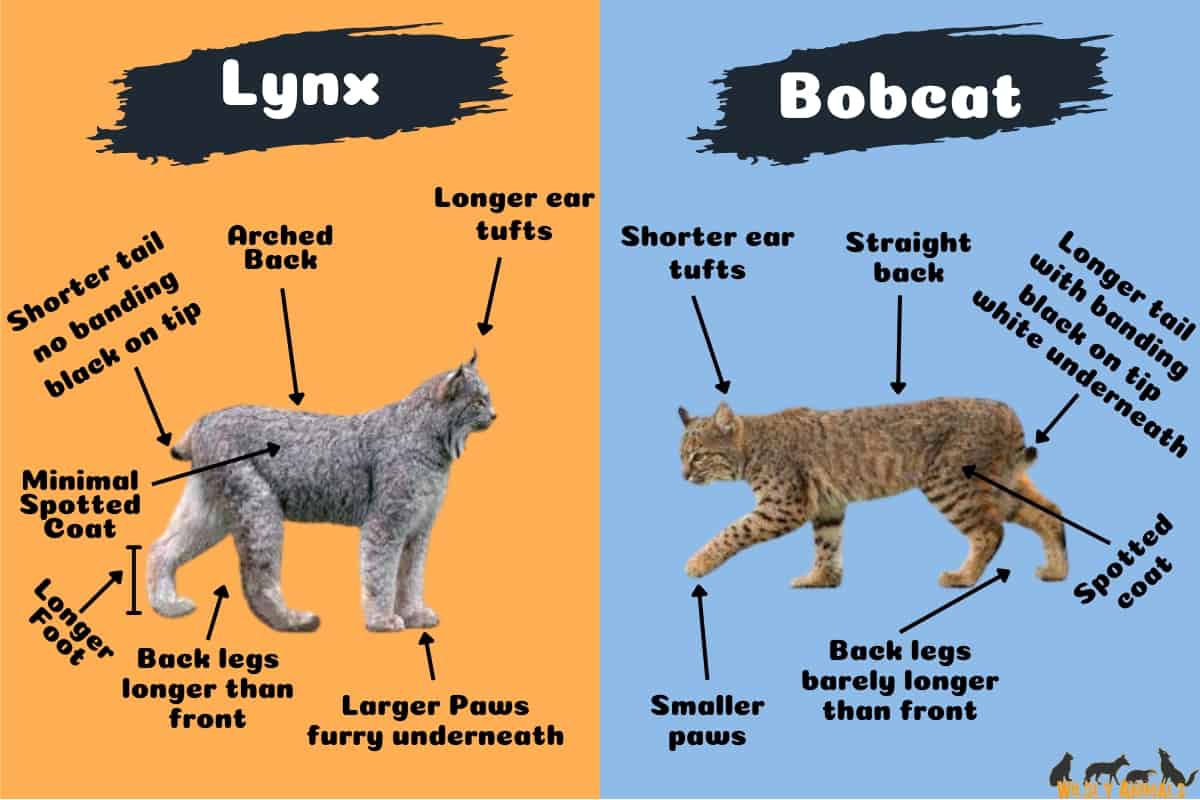
Comparing bobcat vs lynx
Let’s compare these wild cats by looking at some key differences between these wild cats and clear our mindset about them.
| Characteristics | Bobcats | Lynx |
|---|---|---|
| Size | Smallest lynx | Larger than bobcats |
| Height | 2 feet | 2.5-3 feet |
| Weight | 10-38 lbs | 20-64 lbs |
| Length | 26-41 inches | 30-50 inches |
| Track Appearance | Round | Oval |
| Body | Small body with bare soles | Large body with padded soles |
| Paw size | 2.25 inches | 3.5-5 inches |
| Fur | Brown cat with dark spots | Gray, tan, yellow, and brown colors depend on the season. |
| Speed | 30 mph | 50 mph |
| Bite force | 827 PSI | 636 PSI |
| Diet | Carnivore | Carnivore |
| Legs | Short legs with a little bit of fur | Long legs with large padded soles. |
| Speed | 30 mph | 50 mph |
| Geographical range | USA, Mexico | Europe, Asia, Iberia, Canada, USA. |
| Habitat | Swamps, deserts, mountains, and temperate woodlands. | Steppes, forests, and mountains |
| Conservation status | Least concern | Least concern |
Size: bobcat vs lynx
When it comes to size, then we can see bobcats are smaller in size as compared to other lynx species. Bobcats are just 2 feet in height and 41 inches in length from head to tail. Bobcats have also less weight as compared to other lynx members. Canadian lynx are slightly larger than bobcats.
That’s why both wild cats look almost the same at first glance as these cats don’t vary much in terms of size. The feet size of the bobcat is also small and the paws are also not covered with fur as compared to other lynx species. The fur of the lynx is good for their traction in snowy regions.
Legs: lynx vs bobcat
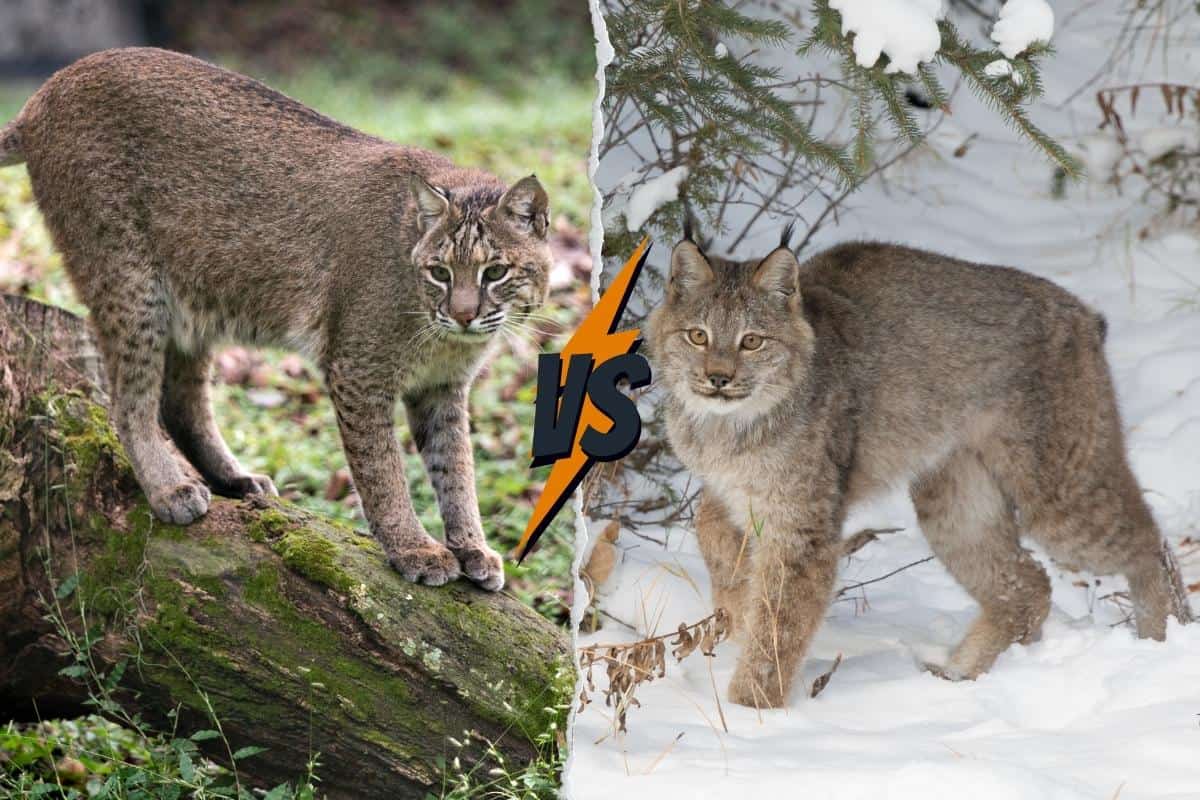
The body of lynx species has been designed in such a way that the body is adaptable to very harsh and cold type climates. They come with long legs, padded soles, and splayed toes. It enables them to walk freely on the snow. Bobcat is devoid of these features as these cats also don’t have to face harsh weather conditions in the southern side of the USA and Mexico. Bobcats have short legs and you will find no fur on their legs.
Fur color pattern: bobcat vs lynx
There is no specific fur color that you can single out for the lynx species. The color of their fur varies from one season to another. It usually varies between gray, tan, yellow, and brown. Sometimes, you will find a mixture of these colors. On the other hand, bobcats have some predefined colors. Usually, bobcats have brown color fur coats along with dark black spots and black-tipped tails at the end.
Bobcats have more spots than Canadian lynxes but fewer than Iberian lynxes. This color of fur helps them easily blend in the local habitat and they can adapt themselves to the local environment. In this way, they can easily stalk their prey and ambush them unexpectedly. The tuft and ruff length at the cheek and ear of the bobcats is shorter than Canadian lynx.
Paw size
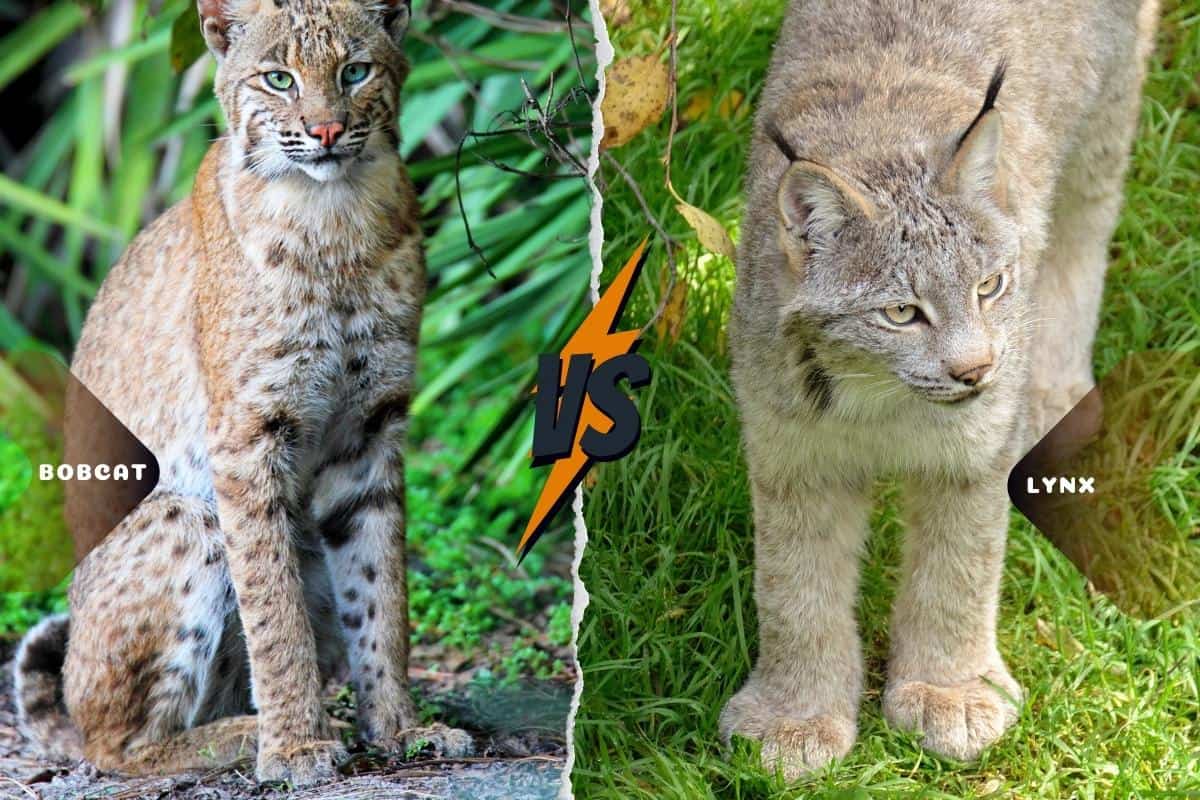
The structure and size of the bobcat paw are altogether different from the paw of the lynxes. Lynxes have large paw sizes and lie in the range of 3 to 5 inches. The large size of the paw of the lynxes is actually due to the snowy, harsh, and cold climate of their habitat.
On the hand, bobcats have small paw sizes as compared to lynxes and lie in the range between 2-2.25 inches. The paw size of the bobcat is good as they don’t live in cold environments. They prefer to live in temperate type regions.
Speed
Lynxes also have an edge when it comes to speed. Despite living in rough terrain and having very deep snow, they run at very fast speeds and reach up to the maximum speed of 50 miles per hour. Bobcats are not fast as lynxes are. They can reach up to the maximum speed of 30 miles per hour in normal terrain. However, both are deadly predators and can easily catch their prey as soon as possible with their running power.
Bite force
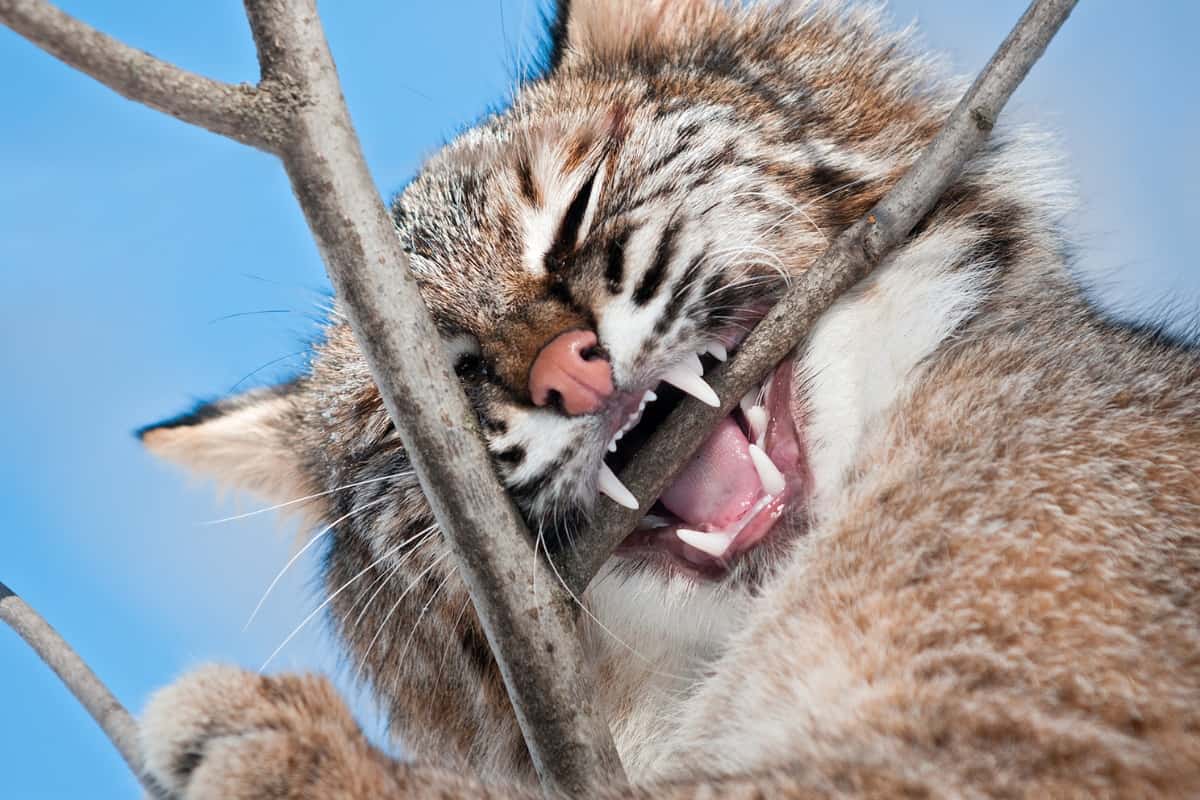
When it comes to bite force, then the bobcats have a very wide and great edge over the lynx. Bobcats are very well-known for their great bite force. Bobcats can put a bite force of at least 827 PSI as compared to lynxes just 636 PSI. It actually happens due to differences in cranial shape and structure. The skull of the lynxes are long and that’s why they could not have teeth that can exert very powerful bite force as powerful as bobcats can do. On the other hand, bobcats have shorter skulls and which is very helpful in biting.
Behavior
Both wild cats are solitary by nature and only come together during mating season. Otherwise, they live in their separate home ranges. In both species, male and females overlap their territories sometimes and could also engage in a fight for their territory.
For territory, bobcats also fight with lynxes, especially the Canadian lynxes who mostly share habitat with bobcats. At an early age, female bobcats hunt together with a kitten to let them train their hunting skills. Overall, both the cat species are nocturnal and territorial animals.
Also, read our article for Species of Bobcats
Diet
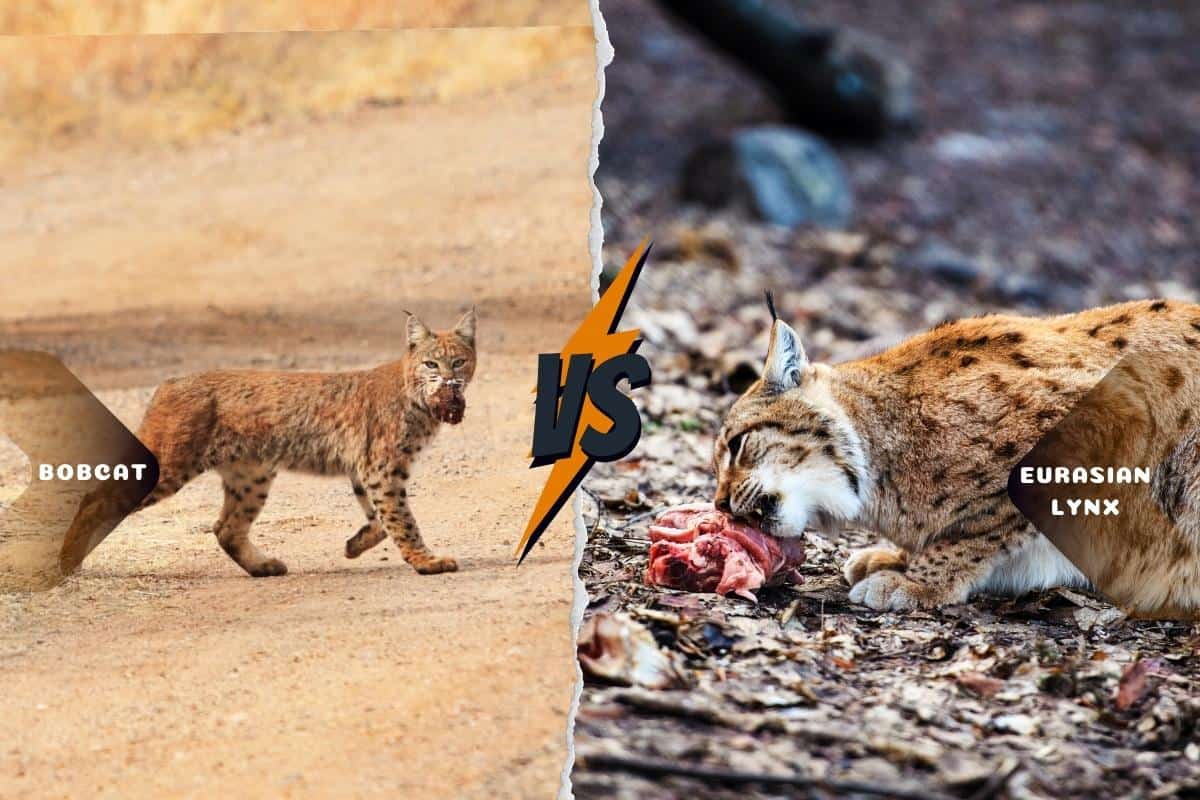
Both wild cats are carnivores by nature and prey on small mammals like rodents, fish, birds, etc. During the winter season, they change their diet and also sometimes hunt some big animals if they are facing a scarcity of food. In the winter season, they also preserve energy for later use. Bobcats sometimes also go after livestock, poultry, and pet animals as they also happen to live very close to human beings.
Conservation status
Both wild cats have quite a stable population throughout their geographical range. According to IUCN, these wild cats are the least concerned and not threatened altogether. However, some scientists have warned that the Canadian lynxes are critical in some areas like northwest Canada.
Geographical range: bobcat vs lynx
All of these wild cats belong to the lynx genus. But these lynx species rarely share their habitat with bobcats. Bobcat is actually the only member of the lynx genus that resides in the United States and Mexico region. In these countries, these cats also don’t live in very cold and harsh environments.
On the other hand, all the other lynx species like Eurasian, Canadian, and Iberian lynx species like to live in very cold and snow-type regions. These regions receive a lot of rainfall annually. But bobcats prefer deserts and swamp-type regions. In very rare instances, bobcats share habitat with Canadian lynx in southern Canada and US states like Montana and Washington. In these states, it might be a little bit confusing for people to differentiate between these wild cats.
Overall, bobcats live only in the North American continent while other lynx species are found in North America, Europe, Russia, and Asia. Source.
Similarities between bobcats and lynxes
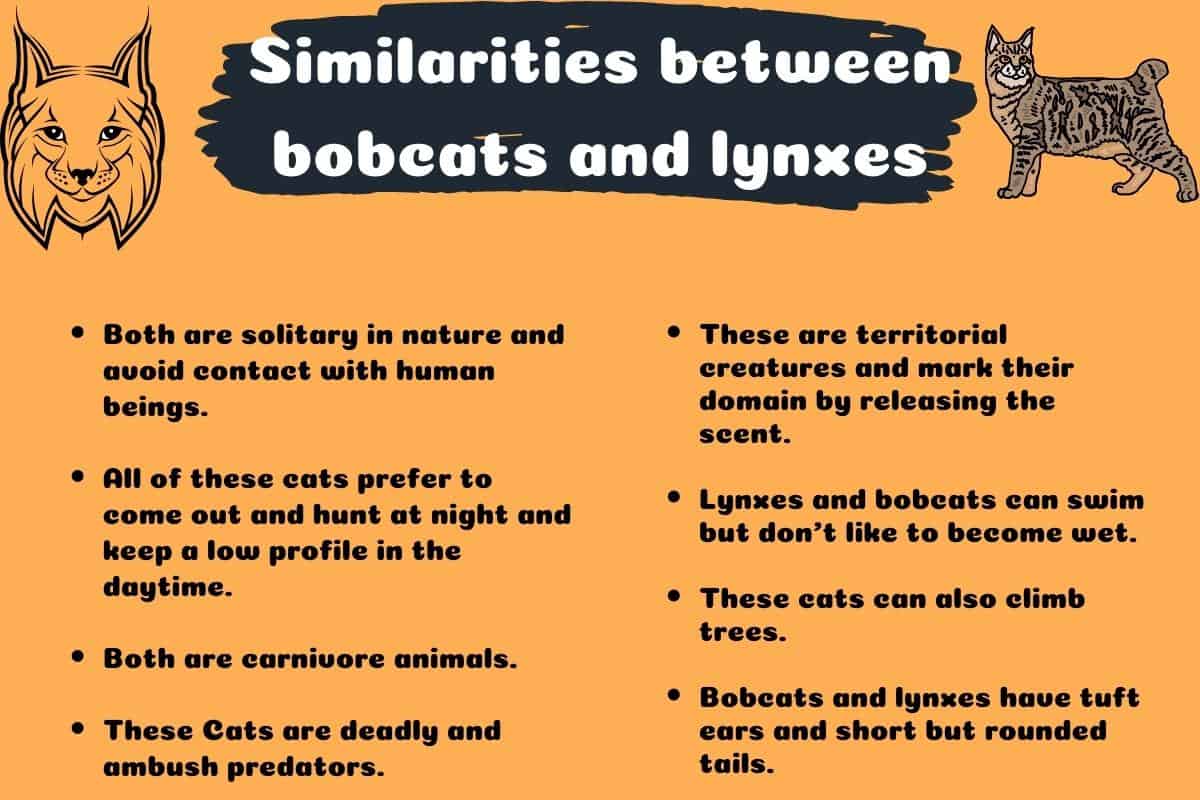
- Both Cats are solitary in nature and avoid contact with human beings.
- All of these cats prefer to come out and hunt at night and keep a low profile in the daytime.
- Both are carnivore animals.
- These Cats are deadly and ambush predators.
- These are territorial creatures and mark their domain by releasing the scent.
- Lynxes and bobcats can swim but don’t like to become wet.
- These cats can also climb trees.
- Bobcats and lynxes have tuft ears and short but rounded tails.
Frequently asked questions
Conclusion
Despite being a member of the same family of the lynx genus, bobcats and lynxes have a lot of very prominent differences between them. We have compared these species in detail on the basis of their size, appearance, behavior, legs, coat color, fur pattern, etc. Many people intermix these wild cats due to their almost same appearance. We have tried our best to clear this confusion by highlighting all the major differences that exist between these animals.

Izzy is an experienced ranch worker who has a passion for exploring nature and getting up close to wildlife. With her connections to various animal organizations, Izzy is well-versed in animal care and rehabilitation.

